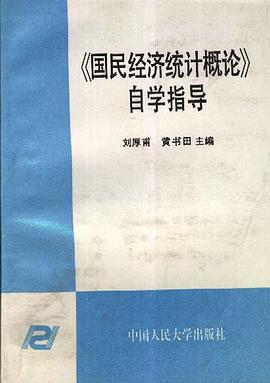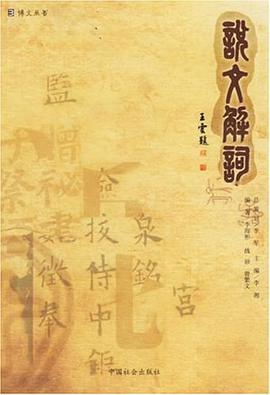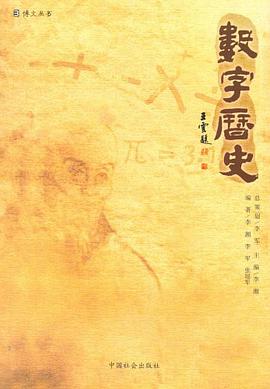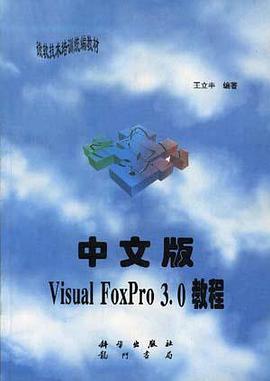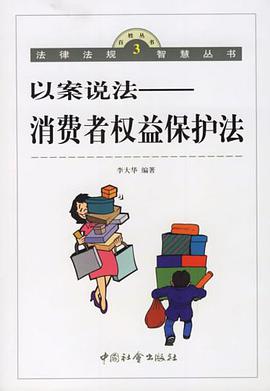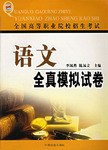

具体描述
作者简介
目录信息
Contents
The Use of Words(词的用法)
1.Consider的用法及其特点
2.follow的特殊用法
3.prefer的用法点滴
4.a bit/a1ittle
5.other than...
6what+be十形容词比较级
7answertoandanswerfor
8accident/incident/event/occurence
9.content/contented
10.same/similar/identical/equal
11.intelligent/intellectual
12.表示原因的介词
13.表示原因的成语介语的构成
14介词except/but+(to)verb
15.except十介词短语
16.加强否定含义的词语
17.“即”一义的表达
18.名词引导的状语从句
19.动语转化为连语
20.副词转化为连词
21 介语from在表赤“阻止”时,有什么特点?
Phrases(短语)
1. be absorbed in /be addicted to
2 according to/according as/in accordance with
3.be(get) acquainted with/recognize
4.apply for/apply to/apply oneself to
5.bear on/bear up/bear down/bear down on
6.be bold to/make bold to
7.be bound to /be bound for
8.be bound up with /be bound up in
9.but for
l0all but/anything but/nothing but
11.by and by/by and large
12.come about/come after/come down/come down on(upon) /come in for
13.come out with /come up with
14.come up against/come up to
15.in course of /in the course of
16.in case /in case of /in the case of
l7.catch up with/be caught up in
18 check out/check over/check up
19 cheer on/cheer up
20 consist of /consist in
21 depend on(upon)/rely on(upon)
22.to the day /to this day
33.deal out/deal with
24.dedicate to /devote to
25.die away /die out
26.have done with/have to do witl/have only to do
27.drive home
28.engage in/engage with/engage on/engage to
29.every four days/every fourth day
30.every now and then/every now and again/every so
often/every once in a while
31.fall to
32.far from
33.feed on(upon)/feed up
34.feel like
35.figure out /figure up
36.follow out/follow through/follow up
37.be in full swing /have full swing
38.For the future/in the future /in future
39 get across
40 get in with /get on with
41 get on to/get up to
42 go in for /go on for
43 go out of the (one`way to do sth
44 good for /for good
45 grow on
46 at hand /by hand/on hand
47 in bonour of/on honour of
48 in'prove in/improve on
49.in thc distani'e/at a distance
50.interfere in /interfere with
51.just now
52.join in/join ot
53.keep at /keep to
54.know of/know about /know from
55.throw light on (upon)/sast loght (upon)/shid lighton (upon)
56.live on/live off/iive with
57.look into/look in /look to
58 make of/make from/make into
59 make up for /make up to
60.may well/may(might)as well/may(might) as wellas
6l.not so much as/not so much 'as ?'without so muchas
62.any answer of/c numbei uf /n/me/f
63.as often sa not /sa oftern sa
64 other than /not (none)other than
65 owing to/ due to
66 pay for/pay off /pay up
67 press for /be pressed for
68.beside the question /to the question
69 rather tha;
70 reach to/each at /reach for
71 with regard to/without to
72.for the sake of/for the purpose of
73 see to
74 to speak of/so to speak
75.stand up for /stand up to
76.take after /look like
77 take for/ake as
78 in time /in no time
79 turn out
80.be well up in./be well up on/be well up for
81.up to
82 in view /on. view
83 wake up /wake to
Reading Comprehension (阅读理解)
1.阅读理解的一般特点
1)文章内容涉及面增广
2)文章内容量增加,时间紧凑
3)文章题目仍分为客观题和主观题
2.阅读理解题型的基本模式
1)DWh-question 与 How 型
2)解词型
3)计算与是否型
4)主题、标题、中心思想型
5)推理、结论型
3.阅读理解中题目的解题方法
1)Wh-question与How的解题方法
2)词或句子的解题方法
3)计算与是否式的解题方法
4.主题、标题、中心思想的解题方法
1)注意短文中段落的首句和主句
2)标题是文章中心思想的精譬概括
3)中心思想大都由主题句体现
5.作出推论,得出结论的解题方法
1)作出推论
2)得出结论
6.阅读理解中的最佳步骤
1)先看问题,以决定选用何种阅读法
2)带着问题阅读短文
7.阅读练习
EnglishWriting(英文写作)
1.试题形式与要求
1)试题介绍
2)作文评价标准
3)写作时的注意事项
2.写作方法与技巧
1)文体分析
2)议论文体
3)说明文体
4)方法与技巧
3.写作方法和范文技巧在各类作文中的运用
1)关键词作文
2)起始句作文
3)情景作文
4)看图表作文
5)命题作文
6)书信函电作文
4.试题及范例
1)关键词作文
2)起始句作文
3)情景作文
4)看图表作文
5)命题作文
6)书信函电作文
TypicalQuestions(典型问题)
· · · · · · (收起)
The Use of Words(词的用法)
1.Consider的用法及其特点
2.follow的特殊用法
3.prefer的用法点滴
4.a bit/a1ittle
5.other than...
6what+be十形容词比较级
7answertoandanswerfor
8accident/incident/event/occurence
9.content/contented
10.same/similar/identical/equal
11.intelligent/intellectual
12.表示原因的介词
13.表示原因的成语介语的构成
14介词except/but+(to)verb
15.except十介词短语
16.加强否定含义的词语
17.“即”一义的表达
18.名词引导的状语从句
19.动语转化为连语
20.副词转化为连词
21 介语from在表赤“阻止”时,有什么特点?
Phrases(短语)
1. be absorbed in /be addicted to
2 according to/according as/in accordance with
3.be(get) acquainted with/recognize
4.apply for/apply to/apply oneself to
5.bear on/bear up/bear down/bear down on
6.be bold to/make bold to
7.be bound to /be bound for
8.be bound up with /be bound up in
9.but for
l0all but/anything but/nothing but
11.by and by/by and large
12.come about/come after/come down/come down on(upon) /come in for
13.come out with /come up with
14.come up against/come up to
15.in course of /in the course of
16.in case /in case of /in the case of
l7.catch up with/be caught up in
18 check out/check over/check up
19 cheer on/cheer up
20 consist of /consist in
21 depend on(upon)/rely on(upon)
22.to the day /to this day
33.deal out/deal with
24.dedicate to /devote to
25.die away /die out
26.have done with/have to do witl/have only to do
27.drive home
28.engage in/engage with/engage on/engage to
29.every four days/every fourth day
30.every now and then/every now and again/every so
often/every once in a while
31.fall to
32.far from
33.feed on(upon)/feed up
34.feel like
35.figure out /figure up
36.follow out/follow through/follow up
37.be in full swing /have full swing
38.For the future/in the future /in future
39 get across
40 get in with /get on with
41 get on to/get up to
42 go in for /go on for
43 go out of the (one`way to do sth
44 good for /for good
45 grow on
46 at hand /by hand/on hand
47 in bonour of/on honour of
48 in'prove in/improve on
49.in thc distani'e/at a distance
50.interfere in /interfere with
51.just now
52.join in/join ot
53.keep at /keep to
54.know of/know about /know from
55.throw light on (upon)/sast loght (upon)/shid lighton (upon)
56.live on/live off/iive with
57.look into/look in /look to
58 make of/make from/make into
59 make up for /make up to
60.may well/may(might)as well/may(might) as wellas
6l.not so much as/not so much 'as ?'without so muchas
62.any answer of/c numbei uf /n/me/f
63.as often sa not /sa oftern sa
64 other than /not (none)other than
65 owing to/ due to
66 pay for/pay off /pay up
67 press for /be pressed for
68.beside the question /to the question
69 rather tha;
70 reach to/each at /reach for
71 with regard to/without to
72.for the sake of/for the purpose of
73 see to
74 to speak of/so to speak
75.stand up for /stand up to
76.take after /look like
77 take for/ake as
78 in time /in no time
79 turn out
80.be well up in./be well up on/be well up for
81.up to
82 in view /on. view
83 wake up /wake to
Reading Comprehension (阅读理解)
1.阅读理解的一般特点
1)文章内容涉及面增广
2)文章内容量增加,时间紧凑
3)文章题目仍分为客观题和主观题
2.阅读理解题型的基本模式
1)DWh-question 与 How 型
2)解词型
3)计算与是否型
4)主题、标题、中心思想型
5)推理、结论型
3.阅读理解中题目的解题方法
1)Wh-question与How的解题方法
2)词或句子的解题方法
3)计算与是否式的解题方法
4.主题、标题、中心思想的解题方法
1)注意短文中段落的首句和主句
2)标题是文章中心思想的精譬概括
3)中心思想大都由主题句体现
5.作出推论,得出结论的解题方法
1)作出推论
2)得出结论
6.阅读理解中的最佳步骤
1)先看问题,以决定选用何种阅读法
2)带着问题阅读短文
7.阅读练习
EnglishWriting(英文写作)
1.试题形式与要求
1)试题介绍
2)作文评价标准
3)写作时的注意事项
2.写作方法与技巧
1)文体分析
2)议论文体
3)说明文体
4)方法与技巧
3.写作方法和范文技巧在各类作文中的运用
1)关键词作文
2)起始句作文
3)情景作文
4)看图表作文
5)命题作文
6)书信函电作文
4.试题及范例
1)关键词作文
2)起始句作文
3)情景作文
4)看图表作文
5)命题作文
6)书信函电作文
TypicalQuestions(典型问题)
· · · · · · (收起)
读后感
评分
评分
评分
评分
评分
用户评价
评分
评分
评分
评分
评分
相关图书
本站所有内容均为互联网搜索引擎提供的公开搜索信息,本站不存储任何数据与内容,任何内容与数据均与本站无关,如有需要请联系相关搜索引擎包括但不限于百度,google,bing,sogou 等
© 2025 book.quotespace.org All Rights Reserved. 小美书屋 版权所有


